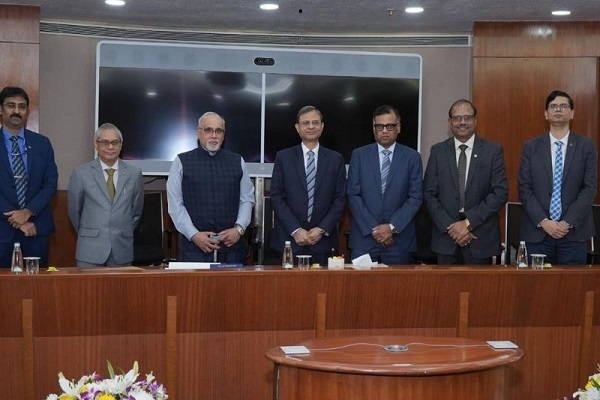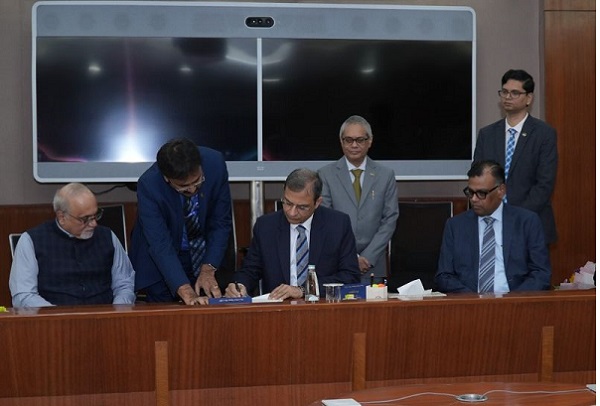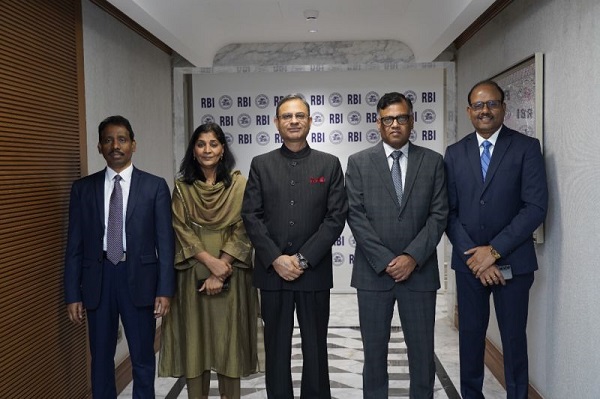.png)

Groupthink is the House View of BasisPoint’s in-house columnists.
May 19, 2025 at 5:56 AM IST
Markets have rushed to reprice expectations for terminal rate following CPI print of 3.16% in April, now betting on a swift slide in the policy rate towards 5.00%. But that narrative may oversimplify both the nature of India’s disinflation and the strategic recalibration underway at Mint Street. The Reserve Bank of India appears to be frontloading liquidity rather than rate cuts.
Governor Sanjay Malhotra’s post-policy clarification that the monetary policy stance provides forward guidance on rates alone, and is not to be conflated with liquidity management, was initially read as a signal of a deeper easing cycle but less-than-easy liquidity conditions.
It has since become clear, with the RBI’s continued bond purchases in May, that the opposite is likely true. Liquidity will be plentiful, while the pace of rate cuts will likely be measured.
Strategic Delinking
This delinking of tools is more than semantic. It reasserts the RBI’s discretion to use liquidity as an independent operational lever, while keeping its rate trajectory flexible and conditional. The move from a "neutral" stance to an "accommodative" one merely narrows the MPC’s corridor of options to ‘pause or cut.’ It offers no assurance about the quantum or timing of those cuts.
Instead, immediate signals lie in liquidity operations.
Overnight rates have persistently traded well below the 6.00% repo rate. Weighted average call money has gravitated towards the lower bound of the corridor, and variable rate repo operations have continued, despite surplus conditions.
These actions are not mere technical adjustments—they likely reflect a strategic preference to ease monetary conditions primarily via liquidity.
Crucially, this may not be matched by equal urgency on the rate front. Yes, inflation is tracking below the forecast, which has been sharply revised down. The April reading was nearly 50 basis points under the central bank’s estimate for the quarter. With CPI potentially averaging closer to 3.5% this fiscal year, real policy rates appear high if one goes by the RBI’s estimate of 150 basis points. MPC member Saugata Bhattacharya had said the RBI’s models show a repo rate of 5.1-5.7% and that he leans towards the lower bound of the corridor.
It is tempting to treat the benign CPI print as a green light for accelerated easing. But this softening in inflation is food-driven, and therefore susceptible to weather shocks or supply-side disruptions. Core inflation remains tame, but the RBI has consistently cautioned against reading too much into transient food price dynamics. Easing oil prices help, but they don’t yet justify a rush to a terminal rate of 5.00%.
The growth picture also may not warrant aggressive front-loading. The central bank’s 6.5% growth estimate carries some downside risk, but available indicators suggest GDP growth will likely remain within a 6.0–6.5% range. This is not a collapse. It argues for incremental easing, not a panic pivot.
A more plausible path is two calibrated 25-basis-point cuts in June and August, followed by a data-dependent pause. The RBI will likely keep its powder dry and resist going for a 50-basis-point move. The global situation remains unsettled, and geopolitical changes could prompt the central bank to make haste slowly on rate moves.
No matter how often the link between the US Federal Reserve and the RBI is denied, the Indian central bank cannot remain indifferent. If the Fed is not cutting rates aggressively, the RBI will likely temper its own moves to avoid a sharp policy divergence and the attendant financial volatility.
Such a sequencing allows monetary conditions to ease without triggering a misalignment between market expectations and actual inflation or growth dynamics. It also helps preserve credibility at a time when premature dovishness could unanchor long-term rate assumptions.
Credit-Deposit
Moreover, the RBI’s current emphasis on liquidity is a response to the constraints of external benchmarking. Loan rates now respond mechanically to repo moves, but deposit rates remain sticky.
Aggressive cuts would compress net interest margins and impair bank profitability. Abundant liquidity provides a workaround, supporting credit flow while avoiding large-scale deposit repricing and a potential volume hit on deposits.
It also helps address the structural inefficiencies, such as the elevated credit-deposit ratio, which could be a drag on the monetary policy objective of pushing credit and potential growth higher. Copious liquidity eases some of the pressure on banks’ liability side.
This strategy—liquidity first, rates later—may give the RBI wider operational bandwidth. It allows easy financial conditions while keeping conventional tools in reserve. Should growth slow or disinflation prove more persistent than expected, the MPC will have the headroom to do more.
In that sense, the central bank has not embarked on a race to 5.00%. It has likely staged a methodical reset of its instruments. Reading the current cycle through the lens of past easing cycles may be analytically neat but strategically naïve. For now, liquidity is the message. Rate cuts may follow—but on the RBI’s terms, not the market’s.




